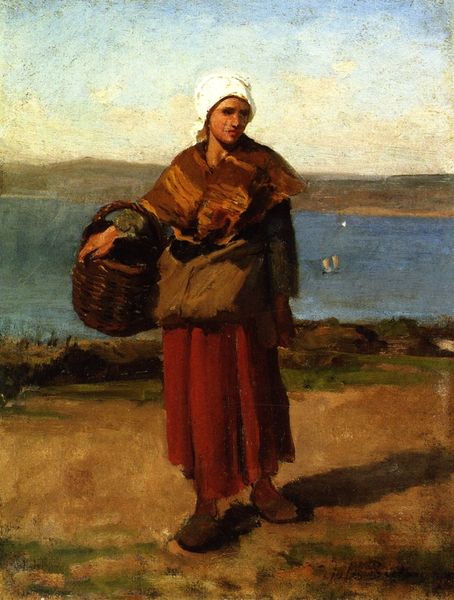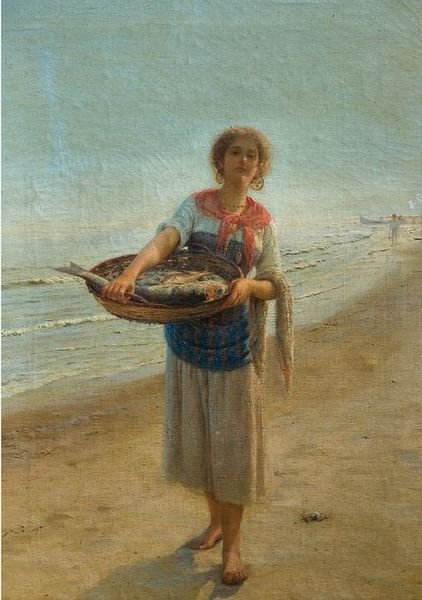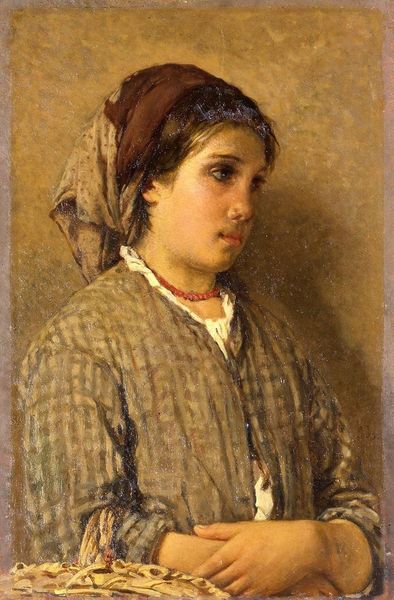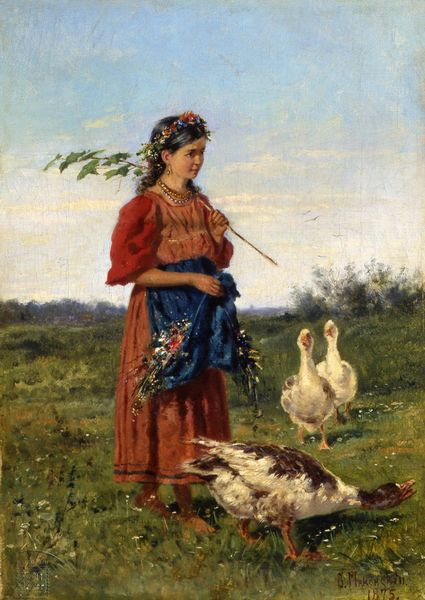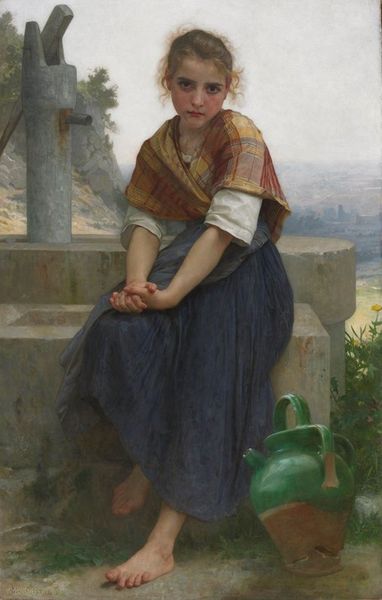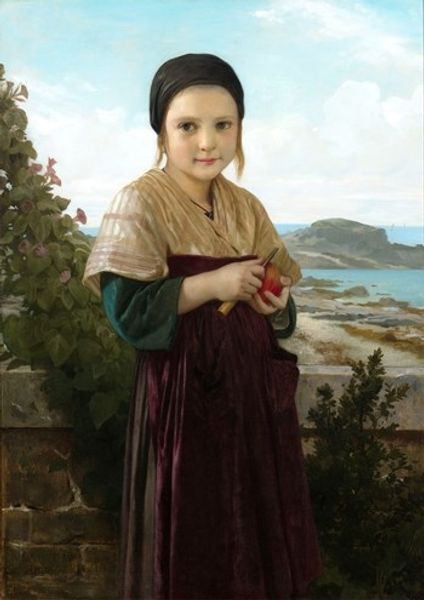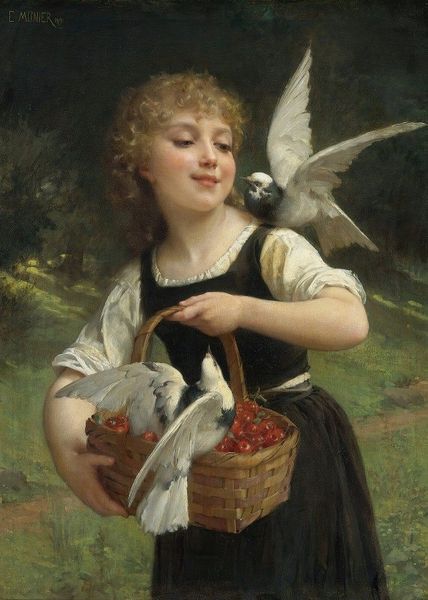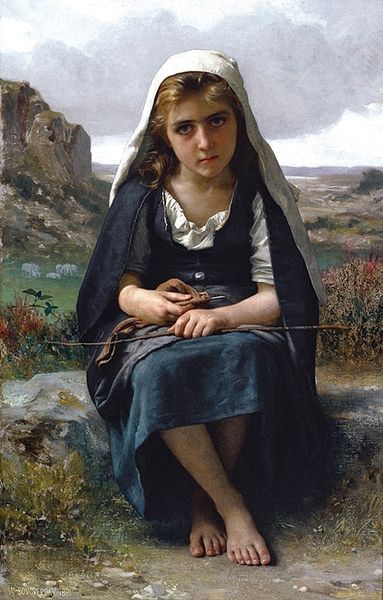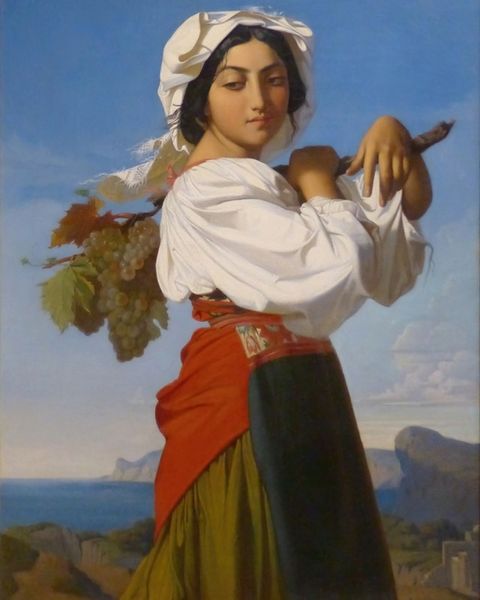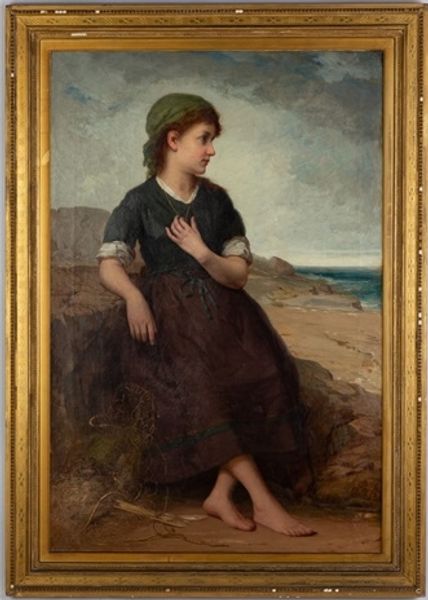
Copyright: Public domain
Editor: Jules Breton's "The Wounded Sea Gull," painted in 1878, presents a striking figure against a somber seascape. She's holding the bird so carefully, but her gaze is fixed on the horizon. I find it melancholy, yet somehow resilient. How do you interpret this work? Curator: It's compelling how Breton connects the girl to the wounded seagull, isn't it? Consider the cultural weight of birds. Often they represent freedom, the soul, or a connection to the divine. Here, that symbolism is subverted by the bird's injury. Editor: So, the wounded bird carries symbolic meaning of vulnerability. Curator: Precisely. What might the girl's averted gaze signify? She's not looking at the bird, but outwards, towards the horizon. Is she hopeful? Resigned? Breton uses this juxtaposition to explore the inner lives of rural women. He’s referencing long traditions that see women as figures of strength but he subtly reminds us of social restrictions imposed at the time. Editor: That’s a powerful reading. The bird becomes a reflection of the young woman’s limited opportunities, yet the gaze signifies aspiration. Curator: Indeed. And the grey tones prevalent in the work can speak volumes in and of themselves, adding to that sense of introspection, and potentially, struggle, inherent in the era's artistic and cultural visual language. It’s a beautiful synthesis of social commentary and timeless symbolism, wouldn’t you agree? Editor: Absolutely. I hadn't considered the historical context of female representation in that way. This really gives me something new to think about.
Comments
No comments
Be the first to comment and join the conversation on the ultimate creative platform.

